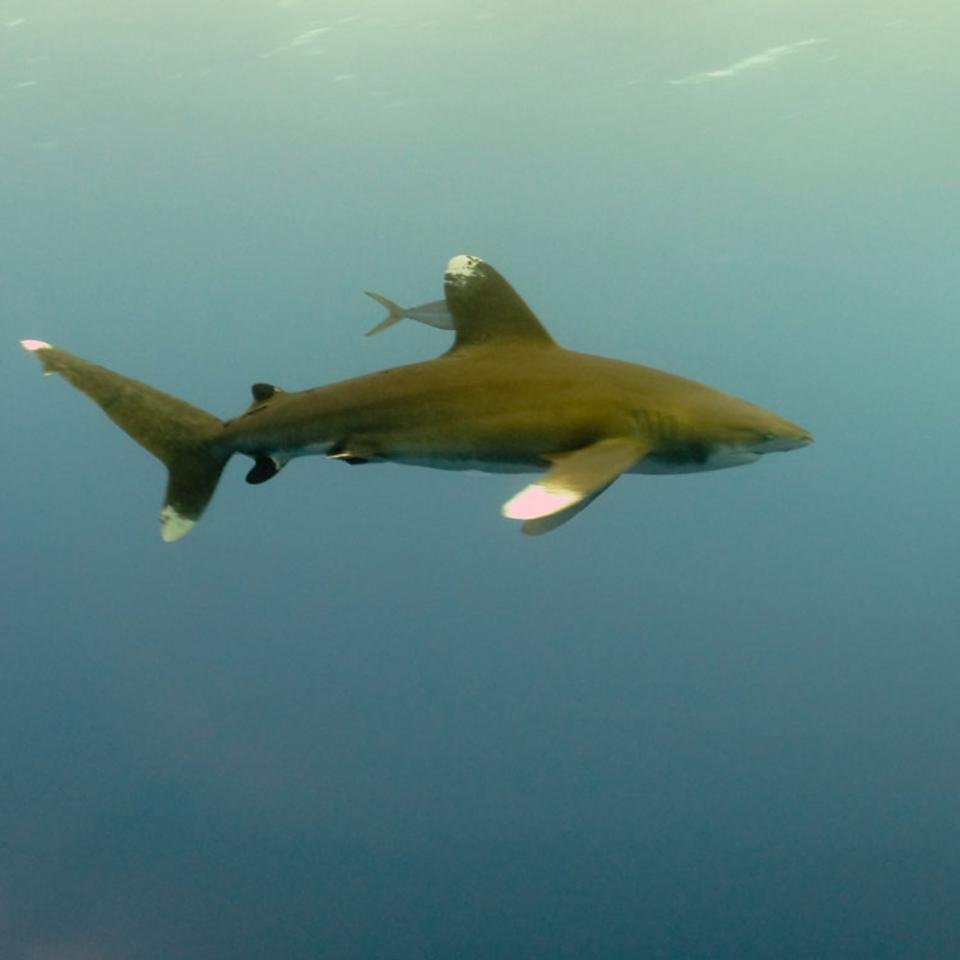Laura Tremblay-Boyer led a Dragonfly assessment of oceanic whitetip shark populations in the Pacific Ocean for the Western & Central Pacific Fisheries Commission (WCPFC). She presented it to the commission in August.
The only previous stock assessment for the species worldwide was in 2012, also for WCPFC. It showed that this once-common shark species had been depleted to less than 10% of its unfished female biomass. In 2018, the US National Oceanic and Atmospheric Administration (NOAA) recommended that the species be listed as threatened.
“I collated information from different sources to inform the integrated stock assessment model. The first and biggest task was to reconstruct the species’ historical catch – the total number of sharks that have been caught each year since 1995 – using data collected by fisheries observers on vessels,” says Laura.
She used a combination of 648 models (scenarios about the shark’s biology and productivity, catch size and survival after capture) to come up with an updated assessment for 2016. It was 4% of the unfished female biomass.
“I used Bayesian methods to create different models for each fishing fleet that was catching them. Those models predicted that by far the biggest losses came from bycatch in the longline fisheries that target tuna.”
In response to the rapid decline in catch rates, the WCPFC had brought in a conservation measure to reduce mortality in the longline and purse seine tuna fisheries. The measure prohibited any whitetip sharks being retained on board from 2013 onwards: dead or alive, they all had to be returned to the sea.
“One important part of the stock assessment was to see if we could detect any effect of this measure on the status of the population. Worldwide, organisations like WCPFC have been adopting non-retention measures for vulnerable shark species but this was the first time the effect of such a measure could be assessed.”
Laura modelled three scenarios (0, 56 and 75%) for the proportion of sharks that would survive being caught and released.
“You could make an optimistic assumption that if you catch a shark and unhook it, it’s going to survive no matter what. But in practice many are already dead when they’re brought on board or die shortly after. Reducing the harm done to living sharks when they’re caught is very important. More would survive if they were handled well.”
But there’s also an issue with crew safety, which has been raised by many fishing nations—getting up close to a shark’s mouth to remove a hook or cut a metal fishing line can be dangerous. Long trailing lines, however, decrease a shark’s chance of survival.
Common Oceans supported research to find out what happened to sharks after they were captured by longline gear and released. Different species were tagged on board then released as normal. The tags self-release after 30 to 180 days, after which time the data they have recorded becomes available.
“They estimated that 60% of the sharks did survive being hooked, depending on the species. This number matched the assumption I made for our intermediate survival scenario in the stock assessment model. Even under the most optimistic scenario (75%), current bycatch rates are still borderline for the long term survival of the whitetips.”
Other scientists were involved in the year-long project. “Felipe Carvalho from NOAA came to work here for a week to work on the stock assessment model with me. It was a really productive collaboration, and also great to host him at Dragonfly HQ.”
Philip Neubauer helped with the Bayesian approach to the catch reconstruction. “He did a whole separate study testing different methods for data-poor assessments. These could be used to track shark populations between the more rigorous 5-yearly stock assessments.”
More information
- Whitetip stock assessment report
- Input descriptions, especially the historical catch reconstruction and catch scenarios
- Data-poor assessment
- WCPFC guidelines on how to handle sharks and rays to increase their survival
Photo credit: Dave Harrison


